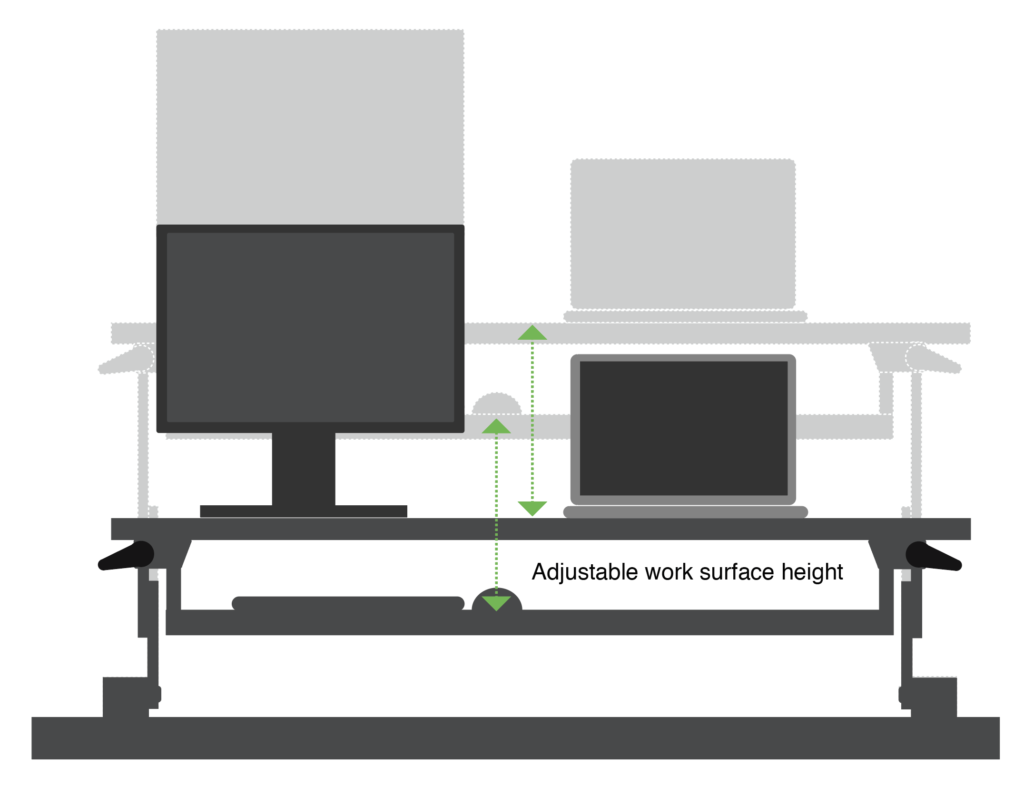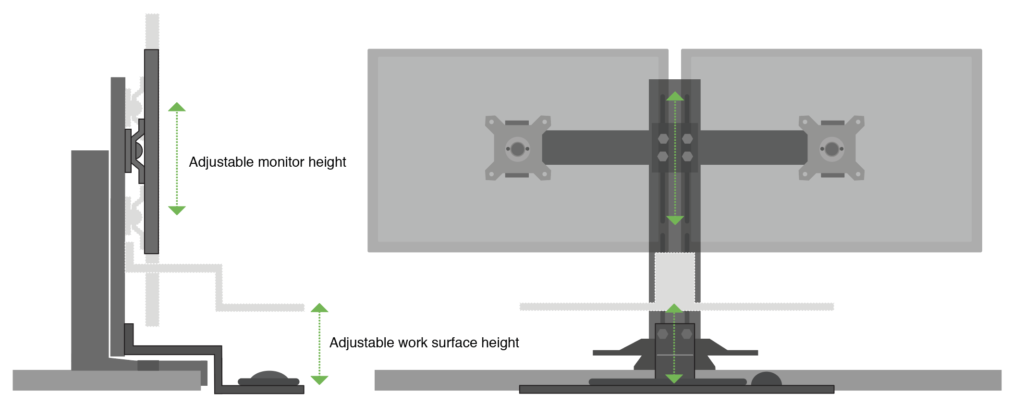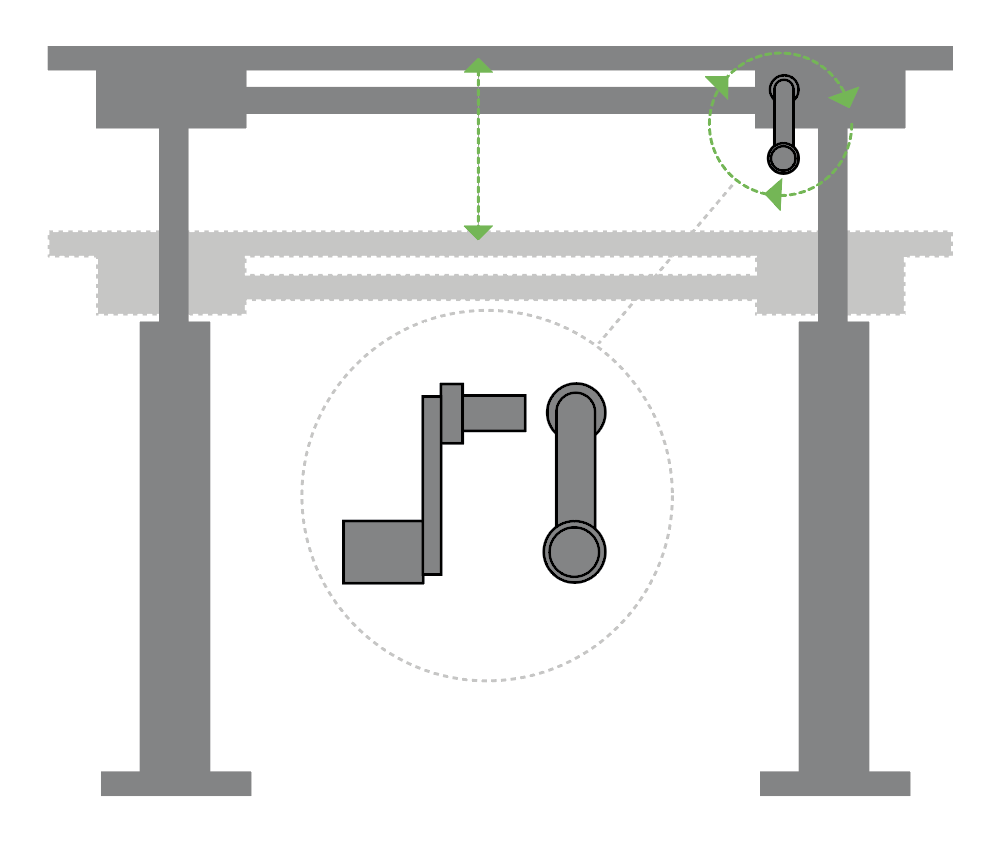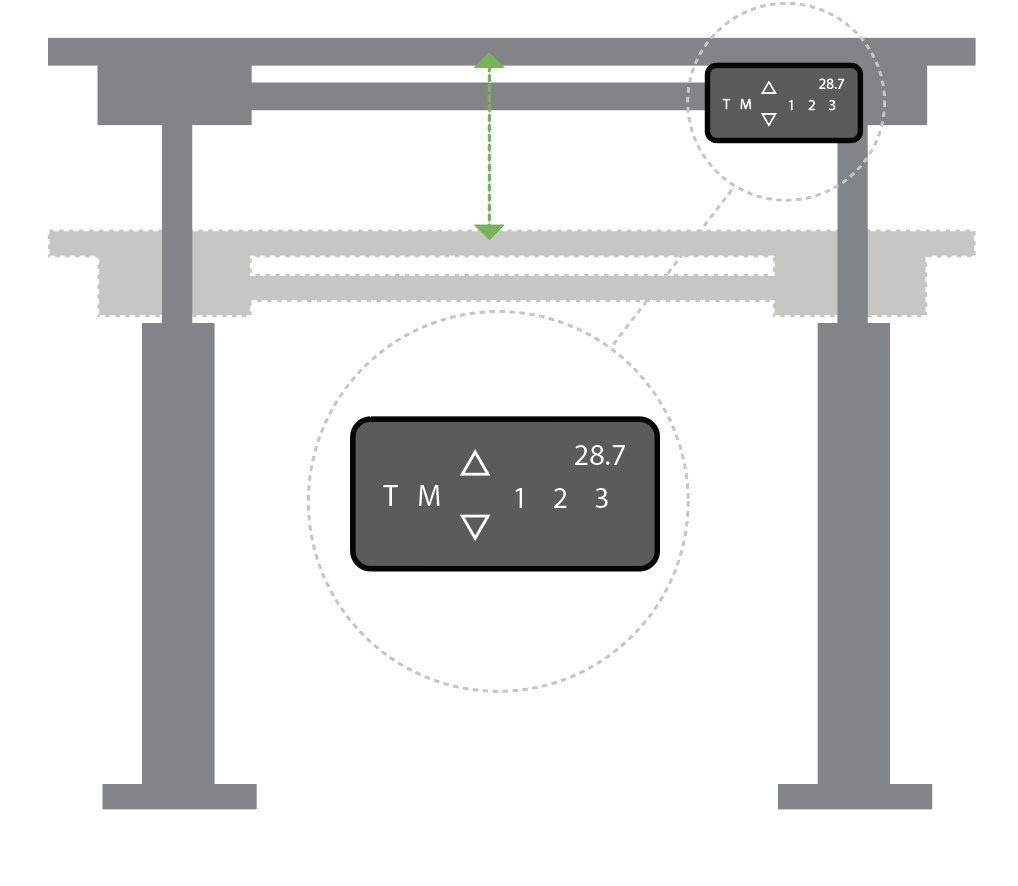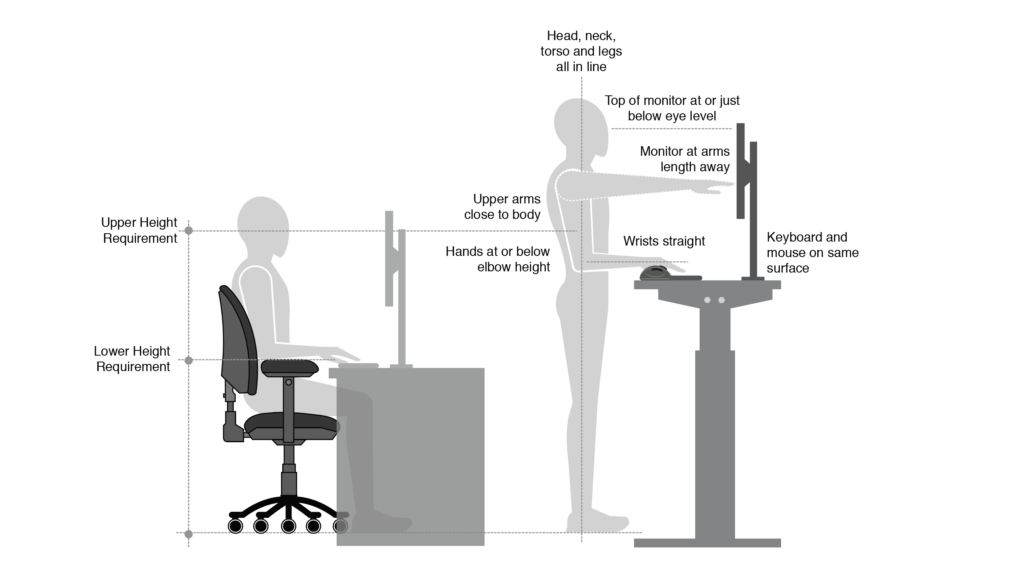Section 7
SIT / STAND WORKSTATIONS
Height adjustability allows the user to both sit and stand while maintaining neutral postures without the use of additional equipment.
When selecting a sit/stand workstation, it is important that the following be considered:
• The specific tasks the user is performing.
• The height range of the workstation; the optimal range will depend on the height and needs of the individual(s) using the desk. When multiple people are sharing the same workstation it is best to find a desk with an extended height range.
• The ease of adjustability (e.g. lever vs. electric).
• Space within the work area (See Work Surfaces - Workspace Envelope).
Merits:
• Can use the existing workstation.
• Easy to relocate.
Limitations:
• Size and adjustability restrictions may not allow all users to obtain neutral postures.
• Limited space on the unit for other materials besides computer components.
• Adjustments generally require manual compression of levers using both hands.
• Elevation of the unit requires manual force.
• Location of the levers may be too wide for some users.
Merits:
• Can use the existing workstation.
• Easily adjustable.
• Allow most users to obtain neutral postures.
• Multiple versions available based upon desired workstation configuration.
Limitations:
• Limited space on the unit for other materials besides computer components.
• Challenging to position multiple monitors.
Merits
• Entire workstation moves up and down.
• Allows most users to obtain neutral postures.
• Provides ample space to house and position all materials including computer components.
Limitations:
• Available office space.
Merits
• Entire workstation moves up and down.
• Allows most users to obtain neutral postures.
• Adjustability is quick.
• Provides ample space to house and position all materials including computer components.
• Does not require any force to adjust.
• Height settings for sitting and standing can be individually programmed.
Limitations:
• Available office space.
• Access to a power outlet.
Additional Workstation Considerations
• Cables, electrical access, storage of materials, and general configuration should not hinder desk adjustment ability.
• Anti-fatigue matting should be utilized while standing.
• Supportive footwear should be worn while standing.
• Continuous periods of sitting or standing should be avoided; alternate as often as possible.
Navigate to other sections of this Reference Guide using the links below:
